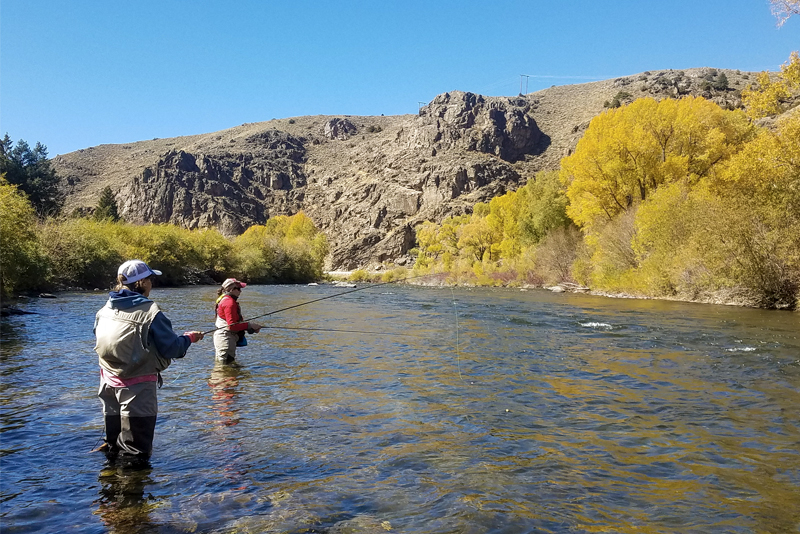
Are River Environments Affected by Recreation?
By Jack Shaw
People flock to the water to relax and have fun. Rivers do so much more than deliver life-giving liquid. They serve as bathing areas, animal habitats, places of serene beauty, and even religious worship. However, human activity in such areas can significantly alter their quality. Recreation affects river environments, but understanding how can help you minimize the damage and enjoy a sustainable vacation.
Disruption to Natural Habitats
Human beings disrupt natural habitats along waterways in various ways. One of the most obvious is underfoot. For example, reaching waterways that run through arid and semi-arid regions means disturbing the biological soil crust. This crust consists of tiny organisms, including algae, cyanobacteria and fungi, that serve a vital role in the greater ecosystem. It provides food for creatures and protects microorganisms from the relentless sun.
Additionally, several species of critters form homes along waterways in nearly every region. For example, beavers may construct lodges close to shore or floating ones that swimmers and boaters may damage. Otters, water shrews, and multiple species of birds occupy the land and air around riverbanks, while fish make their home amid its waters.
Human interference can also disturb aquatic habitats through biological contamination. When waterways become laden with fecal matter, it results in blue-green algae blooms that make the area unsafe for swimming and choke out aquatic life that can no longer receive life-giving sunlight.
Overharvesting a river’s resources creates imbalances between predators and prey and can deplete the hunted resource as well as others in the ecosystem. Fishing can help maintain this balance, but only if all visitors abide by the rules. Obtaining the required license helps officials track populations and harvest levels.
Finally, feeding or otherwise directly interacting with wild animals can disturb habitats. Worse, it can endanger critters and humans alike. Some animals may become dependent on human-provided food sources and grow aggressive when they become scarce. Wild creatures can carry diseases, and such interactions could result in euthanasia for the animal and a round of rabies shots for the person involved.
How to Minimize Disruption to River Environments
To reduce disruption to natural habitats when recreating in river environments, abide by the following guidelines:
-
- Don’t bust the crust: Stick to established trails when traveling from your car or campsite to the waterway.
- Launch only at established sites: Even if you are an experienced boater on a self-guided expedition, you should launch from an established site to avoid disturbing possible habitats.
- Use the restroom before swimming: If bringing children into the water, make sure they wear a tight-fitting, waterproof swim diaper.
- Obtain the required licenses: If you plan on fishing or hunting, ensure you go through the correct channels.
- Look, but don’t touch: Leave wild animals alone when not hunting or fishing.
The Effects of Pollution
Rivers also make up an integral part of the human freshwater, aka drinking supply. Only 3% of the water on earth is potable or suitable for drinking. Seven types of water pollution may increase as a result of recreation in river environments:
- Chemicals: Chemicals are the most common form of water pollution. They may originate from fuel emissions, toys used in the water, sunscreens, lotions or other hygiene products.
- Nutrient pollution: This form of water pollution often occurs from fertilizers but may also result from fecal contamination.
- Microbiological pollution: Bacteria, viruses and other microorganisms can travel from one waterway to another on clothing, boats or tools used in the water.
- Suspended matter pollution: Although it may seem like mere sediment kicked up from the bottom, too much suspended matter blocks sunlight needed by aquatic organisms.
- Thermal pollution: Shifts in water temperature as a result of climate change harm ecosystems.
- Oxygen-depletion pollution: Blue-green algae blooms block vital sunlight, and some release toxins that further harm aquatic ecosystems.
Polluted waters don’t only pose risks to aquatic life. They can harm humans as well. If water from a contaminated river enters the drinking water supply, it can lead to long-term health issues for all who consume it. The dangers include hormonal disruption and cancer. Swimming in polluted waters may spur pink eye, rashes, or even hepatitis, an inflammation of the liver.
How to Minimize Pollution in River Environments
To prevent pollution and recreate sustainably in river environments, please adhere to the following guidelines:
- Stay fresh and clean: Before swimming, wash yourself with a biodegradable soap while standing at least 200 feet away from the nearest water source. Use a bucket if there is no shower available.
- Protect yourself wisely: Although you need sunscreen, choosing a reef-safe version keeps toxic chemicals out of rivers when swimming, wading or tubing.
- Wash your dishes elsewhere: Always use biodegradable cleaners when in the wild. Keep them at least 200 feet away from the water and use only approved greywater disposal sites for dumping waste.
How Recreation Affects River Environments
Recreation affects river environments, and it’s up to human beings to play responsibly and protect these treasures for generations to come. Understanding the dangers and taking the appropriate precautions lets you enjoy these aquatic environments while preserving the rights of others to do the same.
About the author: Jack Shaw is the senior editor of the men’s lifestyle magazine Modded and has written extensively about electric vehicles, sustainable practices, and maintaining a green lifestyle through your everyday actions. His writing can be found in Green Living Journal, Packaging Digest, EcoHotels, and more. Connect with him via his LinkedIn.